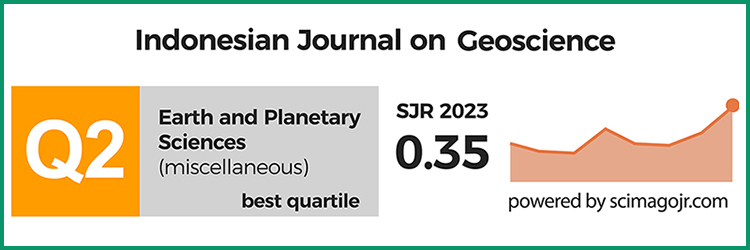Geothermal Surface Manifestation Identification Using Airborne Hyperspectral Imagery Case Study: Davis-Schrimpf Geothermal Field, Salton Sea, California
DOI:
https://doi.org/10.17014/ijog.9.1.119-130Keywords:
geothermal, remote sensing, HyTES, Mineral Mapping, Surface ManifestationAbstract
DOI:10.17014/ijog.9.1.119-130
Research on surface geothermal evidence has been done extensively using remote sensing techniques. For detailed remote sensing exploration on geothermal areas, UAV and airborne based were preferred over the satellite-based sensor. In this research, anomalies in surface temperature, mineral occurrence, and ammonia emission were studied on a set of airborne hyperspectral imagery from NASA, the Hyperspectral Thermal Emission Spectrometer (HyTES). High-resolution surface temperature and mineral maps were able to identify and describe the mineralogy of the mud pots and gryphons at the Davis-Schrimpf Geothermal Field, Salton Sea, California. From the surface temperature map, the surface temperature of the geothermal features was measured at approximately 314°K (40oC) and higher. The purest pixels from MNF transformation of the first four cleanest bands of emissivity map produce endmembers that include the geothermal indicator minerals (barite, anhydrite, quartz, gypsum). Based on the mineralogy deposits, these manifestations are classified as potassic alteration types from a porphyry system that could be an indication of an active geothermal system. This also explains that the surface features are part of the upper reservoir of the Salton Sea Geothermal Field. On the other hand, ammonia detection that was performed in this research failed to get any clear recognition from the simple image processing. It is concluded that the airborne hyperspectral imagery could be a reliable option for remote sensing geothermal exploration, as it was able to characterize the surface geothermal manifestation with quite good detail using this imagery from a wide area of survey.



















